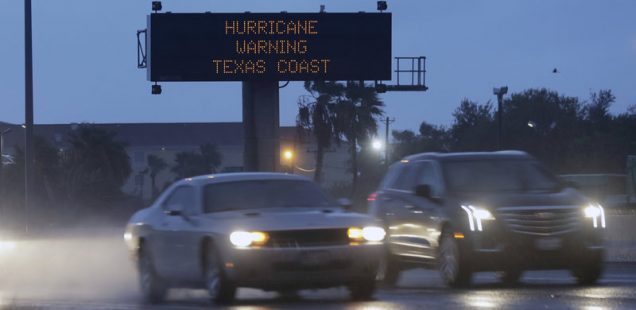
Hurricane Harvey: What You Can Do
On Friday, August 25th, a devastating Hurricane hit the southern coast of the United States, dropping an estimated 27 trillion gallons of rain over Texas and Louisiana. We don’t yet know the full extent of the damage Hurricane Harvey has left behind, but estimates reach up to $75 billion in losses, 30,000 people in shelters, and 33 counties in Texas under federal disaster declaration.
What can we do?
In addition to the pledges for funding and support by local communities and international government agencies, many non-profit organizations are soliciting donations for relief efforts in the Southern United States. Below are our top recommendations:
Pace Cares
In 2012, generous students, alumni, parents, faculty, and staff rallied to establish the Pace Cares Fund, a relief fund for students and families suffering financial losses wrought by Hurricane Sandy. It was borne from the notion that we all have an interest and obligation to support each other. Now, as we continue to monitor the news and see the devastating impact of Hurricane Harvey, it is critical that the Pace Community comes together to support students during this challenging time. There are more than 100 Pace students and their families living in areas affected by the storm. The Pace Cares Fund will support students in immediate need of assistance as a result of the ongoing disaster.
Operation USA (4*)
Mission: Operation USA supports health and education programs in order to help children and families at home and abroad recover and thrive in the wake of disasters, disease, violence and endemic poverty.
What your donation will do: Donations will go to nonprofit organizations working directly in the area to provide food, clothes, and emergency relief.
SBP (4*)
Mission: Shrink time between disaster and recovery. SBP will be on the front lines of Hurricane Harvey before, during, and after the disaster. They have a central office located near the Texas coast.
What your donation will do: Your contribution will help families who have been devastated by disaster return home, and ensure that communities in the future do not have to endure a long, painful recovery.
Feeding Texas (4*)
Mission: Feeding Texas, part of the Feeding America network, helps millions of hungry Texans move toward food security through a statewide network of food banks and programs that target the most vulnerable in every Texas county, especially children and elders.
What your donation will do: Funds will go toward Feeding Texas’s statewide network of food banks. You can also donate to individual food banks in areas affected by the storm, including Houston, Southeast Texas, and Central Texas.
South Texas Blood Center
Mission: Extraordinary people dedicated to life, hope and safety.
What your donation will do: Your donation will pay the additional salary needed to staff doctors, nurses, and emergency coordinators during the crisis.
Other resources:
- How To Help The Homeless Stay Safe During Hurricane Harvey (from Bustle)
- Here’s How You Can Help People Affected By Harvey (from NPR)
Things to consider before donating:
- Donate money, not goods. While many well-meaning people want to donate material goods, this is often not practical. In times of crisis, individuals and organizations may lack the infrastructure to handle material donations on time. Organizations on the ground can use your money to buy the things most needed and distribute them.
- Make sure the organization you choose is well-established and has a history of doing similar work around the world. A great way to ensure that your money is going where you want it to is to check Charity Navigator, an independent organization that evaluates the financial health, accountability, and transparency of charity organizations. We’ve listed and linked to the ranking information pages for each of the organizations we’ve recommended above.
- When donating, be sure you are on a page that designates donations toward relief in the Southern United States, or ensure you are able to choose this particular cause as an option. Generally, without selecting a specific cause, organizations will use donated funds where they believe they are most needed.
- Be wary of telemarketers, emails, or text-message based donations – especially if you aren’t confident about the organization you’re receiving messages from.
- When you donate, sign up for a newsletter from the organization and be sure to keep tabs on what they are doing for Hurricane relief.
- For more tips and considerations on giving during times of crisis, click here.





